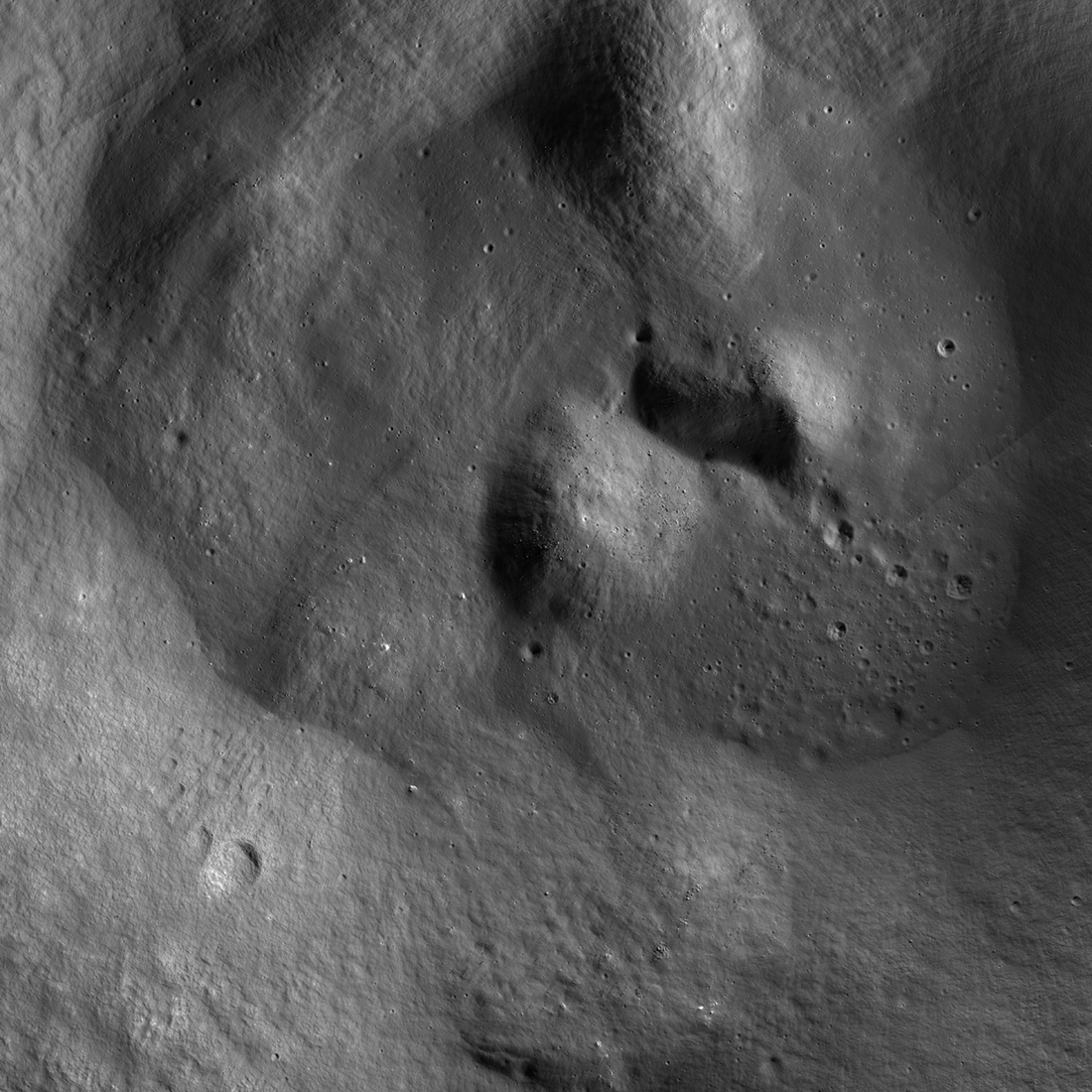
Hermite A PSR

Permanently shadowed regions (PSRs) are of great interest due to their cold temperatures and potential to harbor frozen volatiles. However, because they are permanently shadowed, less is known about these regions of the Moon. Here, a sequence of ShadowCam images reveals the complex floor of Hermite A crater. The striated texture seen in the lower left likely formed as low-angle secondary material hit and then skidded off, coming to rest on the hummocky floor (bright boulders). The lower right portion of the floor looks distinctly different than the rest. This flat surface likely formed as impact melt pooled shortly after the impact event that formed the crater. Later, minor impacts scarred the floor, leaving behind small craters with distinctive hummocks characteristic of substrates comprised of coherent rock; these types of craters are seen in impact melt deposits elsewhere on the Moon.
Full resolution ShadowCam orthomosaic of Hermite A PSR. The large box indicates the area of the opening image. Image width ~15 kilometers [NASA/KARI/Arizona State University].
Posted by Mark Robinson on 23 June 2025